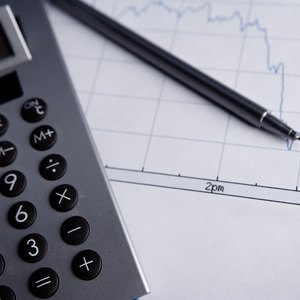
Typically, interest rates are expressed yearly. But people don’t always leave their investments alone for an entire year before withdrawing their money. And neither do they wait for a year to be complete before paying their debts. For these reasons, it is wise to learn how to convert a quarterly interest rate to annual interest rate and vice versa.
Converting Annual Interest Rates
The bond market is pretty interesting. While some types of bonds, such as Treasury Bills, are short-term and mature in less than one year, a significant number of bonds tend to be medium- or long-term investments if you hold them until maturity. But many people don’t do that. Instead, they trade them within the secondary market over-the-counter throughout the year.
And this is where interest rates come in. Generally, bond yields are based on the bonds’ prices and the coupon rates calculated yearly even when they offer interest twice a year. If you hold the bond for a complete period between two coupon dates, you should get the entire interest that has accrued during that period.
However, if you sell the bond before that time has elapsed, the person who buys it should pay you the accrued interest until that point. And then, the bond issuer will pay that entity the interest on the next coupon date when it is due. Usually, that is based on simple interest.
For example, if you hold a bond that pays semi-annually for a quarter (three months), you would need to understand how to calculate the quarterly interest rate, so you can get the accrued interest due to you from investing in it. Therefore, it pays to know how to calculate periodic rates.
Calculate Annual Interest Rate to Quarterly Interest
The way you convert quarterly interest rate to annual and vice versa will lead to different results, depending on whether you are using simple interest or compound interest. The latter may be more complex, depending on what information is available.
For simple interest, all you need to do is to divide the annual interest rate by four (a year has four quarters) to get the quarterly interest and solve for the final investment amount. On the other hand, you could convert the quarterly rate to the annual interest rate by multiplying by four.
Calculating Quarterly Interest Example
For example, suppose you have a $12,000 investment that pays a simple interest rate of eight percent annually and matures in five years. In that case, you can determine how much interest your investment would have accumulated after the first quarter of the third year (2 ¼ years) using the simple interest formula:
I = PRT, where P = Principal, R = Annual Rate, and T =Time
In this case, interest for 2 ¼ years or 9/4 years is:
I = $12,0008/1009/4, which equals $2,160.
Therefore, your entire investment would be worth ($12,000 + $2,160), which equals $14,160.
It is akin to calculating the simple interest for two years and a quarter of the year separately:
($12,0008/1002) + ($12,0008/1001/4) = $(1,920+240), which still equals $2,160.
Compound Interest Application
Calculating final amounts using compound interest is different due to the formula for such interest rates and depending on whether the interest is compounded quarterly or annually. The calculations are not straightforward as in the case of simple interests.
If the interest is compounded quarterly, but you withdraw your investment after 2 ¼ years, you would use the compound interest formula below to get the total amount and then subtract it to get the accumulated interest.
A=P (1+r/n) nt
Where A = Maturity Value
P = Principal
r = Interest rate per year
n = Number of times the interest is compounded annually (compounding frequency)
t = Total compounding period in years
A=P (1+r/n) nt, which translates to $12,000(1+ (0.08/4))4*2.25, which is $12,000(1.02)9 , which equals $14,341.11. Once you subtract the principal, your interest will be $2,341.11.
However, if your interest is compounded once a year, but you withdraw your money within the same period of 2 ¼ years, your total amount would be as follows:
$12,000(1+0.08/1)12.25, which is $12,000(1.08)2.25 and equals $14,268.71. And when you subtract the principal, your interest will be $2,268.71.
While it’s fun to try and figure out the quarterly interest, it is also challenging. So, you can convert the quarterly interest rate to annual rates or vice versa using a quarterly interest rate calculator. Plenty of them are available online.
But remember that interest paid quarterly is vastly different from interest compounded quarterly. Generally, compound interest generates more money than simple interest. However, the more times you compound an investment amount, the more interest you will get.
References
Writer Bio
I hold a BS in Computer Science and have been a freelance writer since 2011. When I am not writing, I enjoy reading, watching cooking and lifestyle shows, and fantasizing about world travels.

